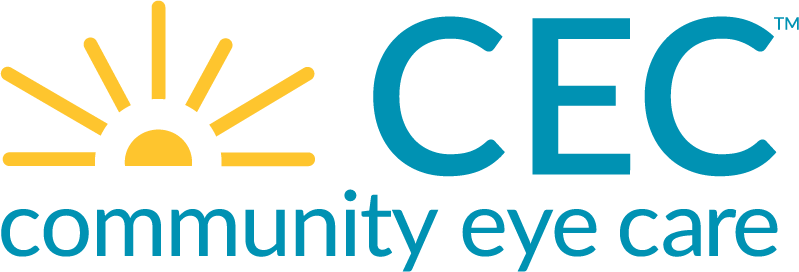
Understanding the Critical Link Between Children’s Vision and Learning
Healthy vision plays a crucial role in a child’s physical development, overall well-being, and success. Unfortunately, according to the Visual Learning Center of America, one out of four children struggle with reading and learning because of undiagnosed vision problems. When children struggle with vision issues, it can hinder their academic performance and dampen their enthusiasm for learning.
From reading the board to writing notes and following along in textbooks, vision plays a pivotal role as most classroom activities are visually oriented. If a child’s vision is impaired, they might find it challenging to keep up with their peers. This can lead to frustration, decreased self-esteem, and a reluctance to engage in schoolwork.
Moreover, healthy vision is not just about seeing clearly. It also involves the ability to focus, track moving objects, and perceive depth and colors accurately. These visual skills are essential for learning and participating in sports and other extracurricular activities.
Common Vision Problems in Children
Understanding the common vision problems that children might face is the first step in ensuring their eye health. Some of the most prevalent vision issues in children include:
- Nearsightedness (Myopia): This condition makes distant objects appear blurry while close objects are seen clearly. It is one of the most common vision problems in children.
- Farsightedness (Hyperopia): Children with hyperopia can see distant objects well but have difficulty focusing on objects that are close.
- Astigmatism: This condition results from an irregularly shaped cornea, leading to blurred vision at all distances.
- Amblyopia (Lazy Eye): This occurs when one eye is weaker than the other, leading to poor vision in the affected eye.
- Strabismus (Crossed Eyes): This is characterized by the misalignment of the eyes, where one eye may turn in, out, up, or down.
Recognizing these vision problems early on can make a huge difference in a child’s academic and social development.
Signs of Vision Problems in Children
Parents and teachers play a critical role in identifying potential vision problems in children. While some signs are obvious, others can be quite subtle. Here are some common indicators that a child might be experiencing vision issues:
- Squinting or closing one eye to see better
- Holding books or objects very close to the face
- Complaints of headaches or eye strain
- Frequently rubbing eyes or blinking excessively
- Avoiding activities that require near vision, such as reading or homework
- Difficulty following along when reading
- Tilting the head to one side
- Short attention span during visual tasks
If you notice any of these signs in your child, it’s important to take them for a comprehensive eye exam to address any potential issues promptly.
School Vision Screenings vs. Comprehensive Eye Exams
School vision screenings are a common way to check for vision problems, but they are not a substitute for a comprehensive eye exam. While screenings can help identify children who may have vision issues, they are limited in scope and might miss some problems.
School screenings typically assess distance vision but often do not test for other critical aspects such as near vision, eye coordination, focusing skills, and overall eye health. A comprehensive eye exam, on the other hand, is performed by an eye care professional and includes a thorough evaluation of all aspects of vision and eye health.
During a comprehensive eye exam, an optometrist or ophthalmologist can diagnose conditions like astigmatism, amblyopia, and strabismus, which school screenings might overlook. Early detection and treatment of vision problems through comprehensive exams are essential for preventing long-term issues and supporting a child’s learning and development.
The Importance of Annual Eye Exams
Annual eye exams are crucial for maintaining your child’s vision health. Children’s eyes can change rapidly as they grow, and regular check-ups ensure that any changes or problems are detected and treated early. These exams can help prevent vision issues from affecting academic performance and overall quality of life.
During an annual eye exam, the eye doctor will check for common vision problems and also assess the overall health of the eyes. They can provide prescriptions for glasses or contact lenses if needed, and offer advice on eye care and protection.
Regular eye exams are particularly important for children with a family history of vision problems or those who already wear glasses or contact lenses. By keeping up with annual exams, you can help your child maintain clear vision and succeed in school and beyond.
---
By understanding the critical link between children’s vision and learning, recognizing the signs of vision problems, and prioritizing comprehensive eye exams, you can ensure your child has the best chance for academic success and a bright future. Healthy vision is not just about seeing clearly; it’s about unlocking their full potential in every aspect of life. So, make eye health a priority and watch your child’s confidence and performance soar!
Information received through CEC vision care channels is for informational purposes only and does not constitute medical advice, medical recommendations, diagnosis, or treatment. Always seek the advice of your eye doctor, physician, or another qualified health provider with any questions you may have regarding a medical condition.
CEC is a wholly-owned subsidiary of VSP Vision.
Sources: American Optometric Association (AOA), American Academy of Ophthalmology (AAO), The Vision Council (TVC), National Eye Institute (NEI), and Centers for Disease Control and Prevention (CDC).
Back to All

